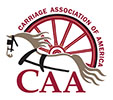 A. According to “Practical Blacksmithing,” edited by M.T. Richardson and published in 1891, no U.S. standard for the sizes of bolt-heads or nuts, nor for the pitch of screw threads for bolts existed before 1868. In that year William Sellers & Co. of Philadelphia designed an angle and pitch of thread as well as standard sizes for bolt-heads and nuts.
A. According to “Practical Blacksmithing,” edited by M.T. Richardson and published in 1891, no U.S. standard for the sizes of bolt-heads or nuts, nor for the pitch of screw threads for bolts existed before 1868. In that year William Sellers & Co. of Philadelphia designed an angle and pitch of thread as well as standard sizes for bolt-heads and nuts.
These standards were recommended for adoption as the U.S. standard by the Franklin Institute of Philadelphia. At the time Richardson’s book was written, there were three forms of thread in use in the country.
The first type was called the V thread, or sharp V thread, and was the standard used for gas and steam pipes. The second form was the United States Standard Thread, and in this the sides of the thread were at 60°. The top and bottom of the thread was flattened. The third form was the British Whitworth in which the sides of the thread were at the angle of 55° with the top and bottom of the threads given a rounded form.
The U.S. Standard 1/4″ bolt had 20 threads to the inch and the square bolt was 1/2″ square. The Whitworth coarse thread also had 20 threads to the inch for a 1/4″ bolt, but there was a difference in the depth of thread. There was a Whitworth fine thread with 26 threads to the inch for a 1/4″ bolt.
The U.S. Standard was used for many years until there was an agreement between the U.S., Canada and the United Kingdom for a unified standard. This resulted in the American Standard Unified Thread Series of 1949. The 1/4″ bolt in this series has 20 threads to the inch, and the fine threads has 26.
Many more factors are involved in these standards than have been noted here and you should consult an engineer’s handbook for more information.
Many European carriage builders evidently did not work to any kind of standard thread. With such carriages it is best to assume that each nut was made to fit its own bolt and is not interchangeable with any other nut even on the same carriage.
From The Carriage Journal Vol 21, NO 1, Summer 1983
